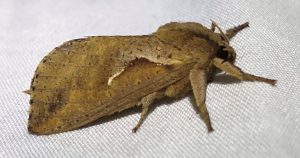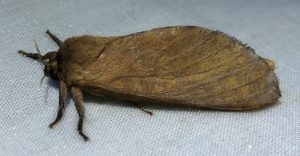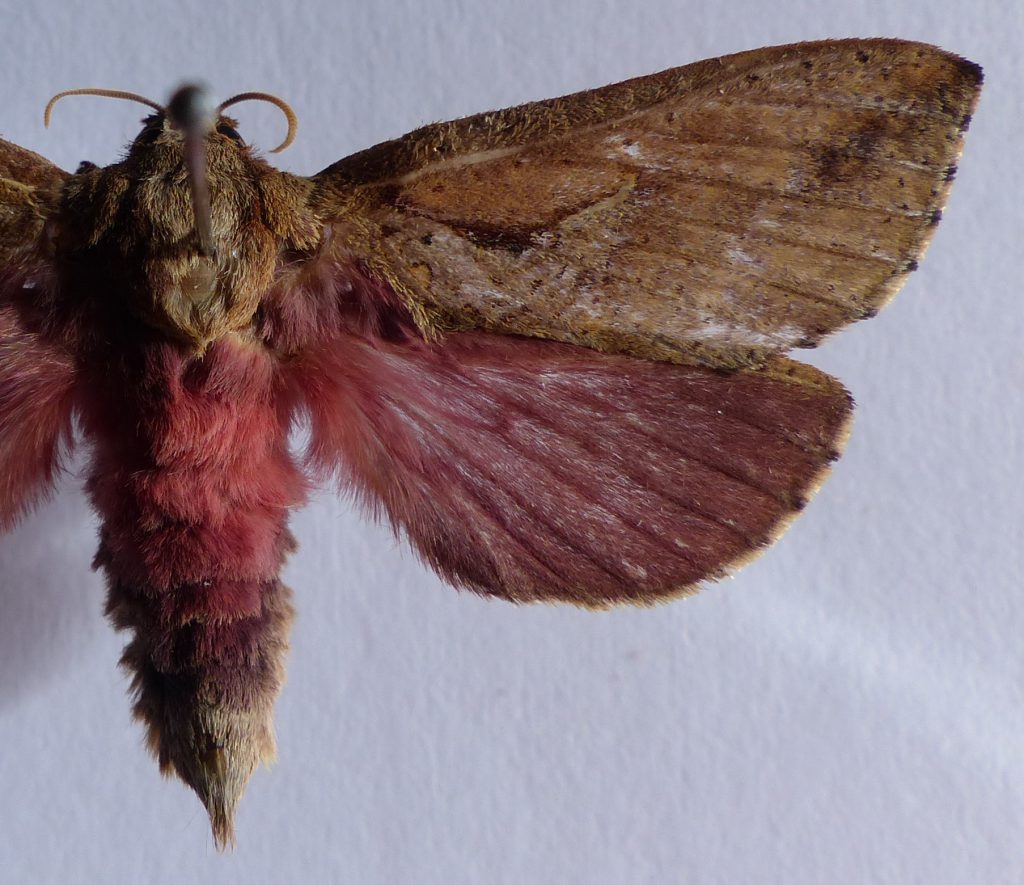Species of the month: Maroon Ghost Moth
This month we’re highlighting an insect which has recently seen a distribution expansion thanks to local observations.
The Maroon Ghost Moth Elhamma australasiae, first described in 1856, has a wide distribution in south-eastern Australia, but was not known until recently to occur in South Australia. In February 2014, after 20 years of insect monitoring, I recorded a male Maroon Ghost Moth at Moorak, south-west of Mount Gambier. The moth was lured using ultra-violet light, and seen only a few days after a summer rainfall event in February, which often triggers emergence in this moth family. A female moth was captured at the same location in March.
These new records greatly expand the known range of the Maroon Ghost Moth, but little is known about its biology, habitat and plant hosts. We need more eyes looking for this elusive species! Read on to learn more about what to look for…
More about the Maroon Ghost Moth
The Maroon Ghost Moth is the only species of Elhamma known from Australia and part of the Hepialidae family which includes ghost moths and swift moths (Tindale 1935). The males may be dark chocolate-brown, grey or an ochreous-red with a characteristic stripe on the forewing (pictured above left) in all colour forms. Females are larger than males, and almost free from markings; they may be grey, ochreous-red, or yellow (pictured above right). Different colour forms may occur together. Hind wings in both sexes tend to be pinkish-tinged (see photo below), but the hind wing and abdomen in fresh specimens can be a deep maroon. The flight period is January to early May (Kallis 2015; Simonsen 2015) but in South Australia they have only been seen in February and March.
Individuals have been recorded clinging to wet sword-grass and reed stems in swampy places at dusk and after dark, and adults fly in grassy areas (Common 1990). The larval food plants in remnant vegetation are unknown, but thought to be grasses and sedges (Zborowski & Edwards 2010).
The Maroon Ghost Moth was observed on a privately owned hobby farm. Since 1997, about half of the six hectare property has been planted with over 60 species of native plants including a range of eucalypts, acacias and understorey plants including Poa, Lomandra, Austrostipa, Senecio and Dianella. The property is 4 km away from any remnant vegetation, with some revegetated Eucalyptus viminalis and Acacia melanoxylon on a neighbouring property. The local habitat or larval host plant for this species aren’t known.
Recent records for the species in South Australia and Victoria have expanded the Maroon Ghost Moth’s distribution further west and north, into western Victoria and northern Queensland (see below).
Please keep an eye out for this moth and if you find any, please take photographs and get in touch with me.
References and further reading
Atlas of Living Australia (2018). Maroon Ghost Moth http://ala.org.au. Accessed 2 November 2018.
Australian Hepialidae (2015). Mothing at Wee Jasper for Heps. https://australianhepialidae.wordpress.com/2015/03/12/mothing-at-wee-jasper-for-heps/amp/. Accessed 10 March 2019
Common, I. F. B. (1990). Moths of Australia. Melbourne University Press, Carlton.
Herbison-Evans, D. (2017). Lepidoptera larvae of Australia. http://lepidoptera.butterflyhouse.com.au/hepi/australasiae.html. Accessed 6th March 2019
Kallies, A. (2015). Moths of Victoria. Part 6 Ghost Moths – Hepialidae and Allies. Entomological Society of Victoria, Melbourne.
Nielsen, E. S., Robinson, G. S. & Wagner, D. L. (2000). Ghost-moths of the world: a global inventory and bibliography of the Exoporia (Mnesarchaeoidea and Hepialoidea) (Lepidoptera) Journal of Natural History, 34(6): 823-878.
Simonsen, T. J. (2015). Elhamma Walker (Lepidoptera: Hepialidae) revisited: adult morphology, assessment of recently proposed synonyms and descriptions of two species. Zootaxa 3955 (3): 301–328.
Tindale, N. B. (1935). Revision of the Australian Ghost Moths (Lepidoptera Homoneura, Family Hepialidae) Part III – Elhamma, Records of the SA Museum 5 (1): 275-278.
Zborowski, P. & Edwards, T. (2010). A guide to Australian moths. CSIRO Publishing, Collingwood.




